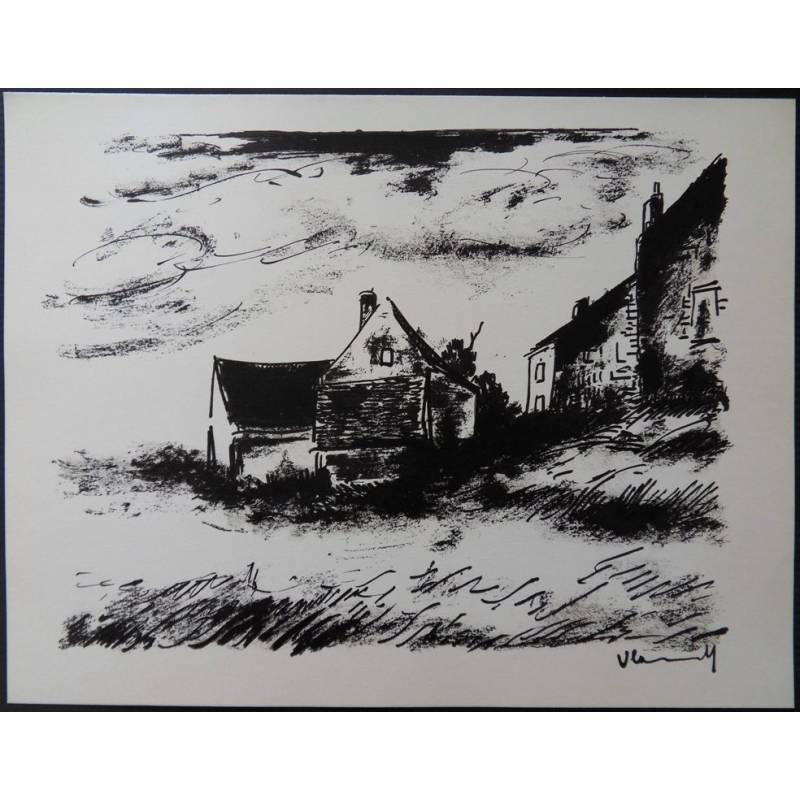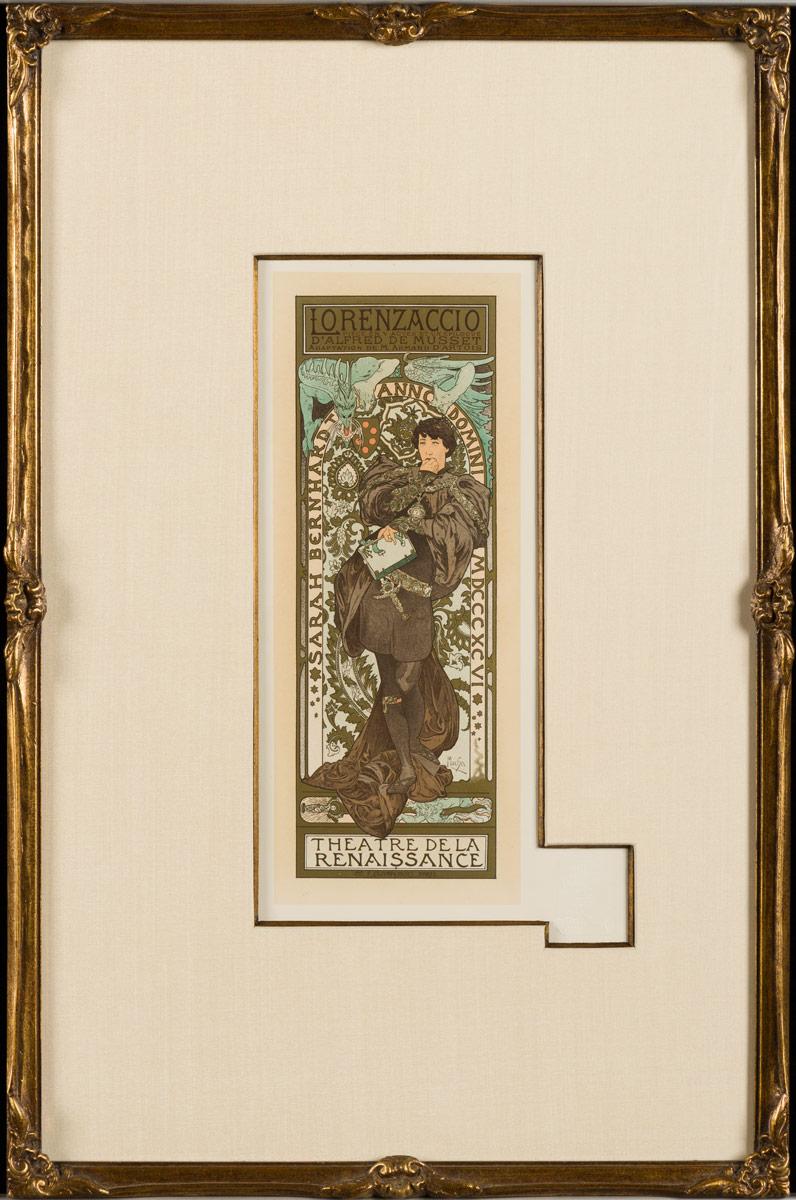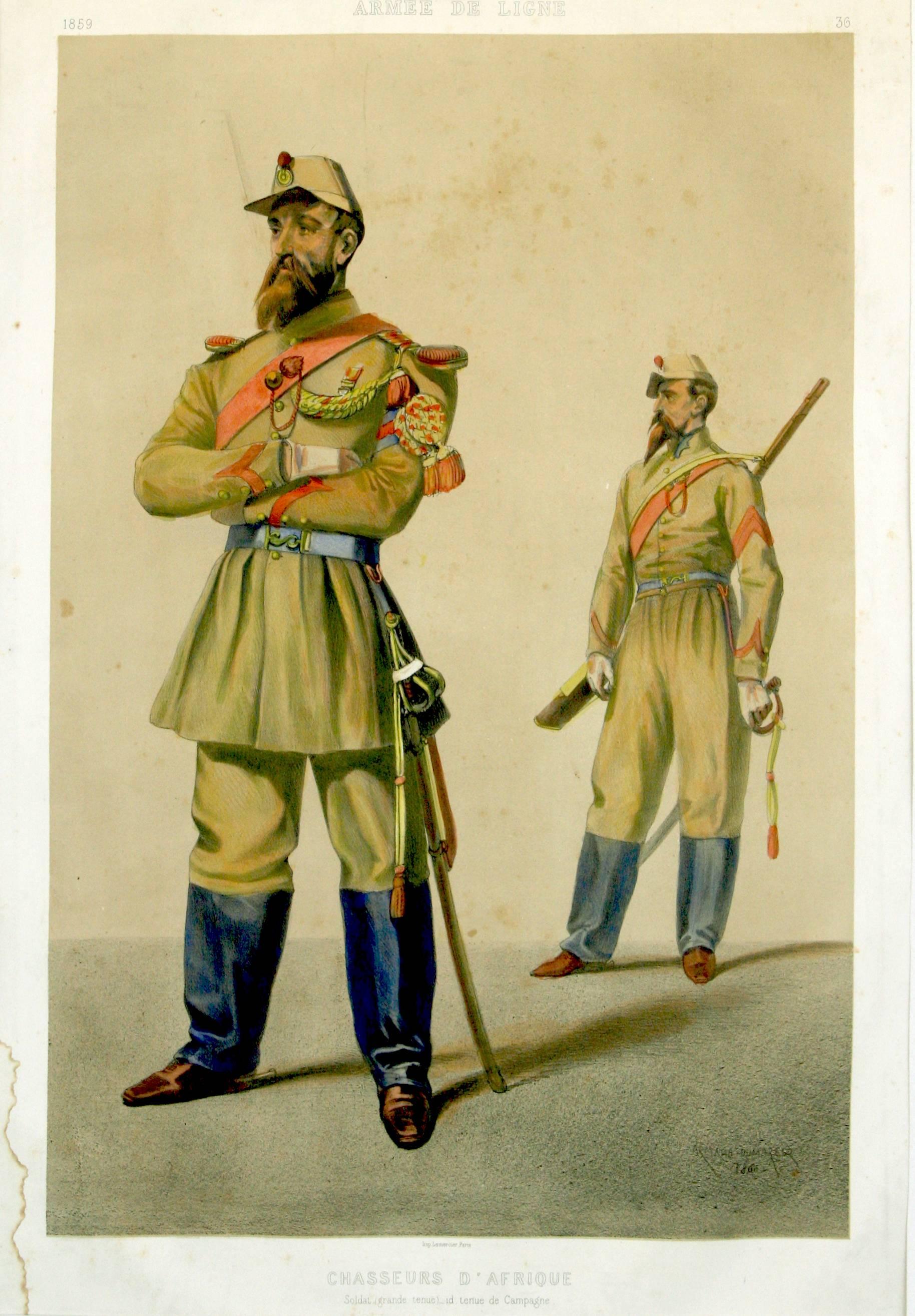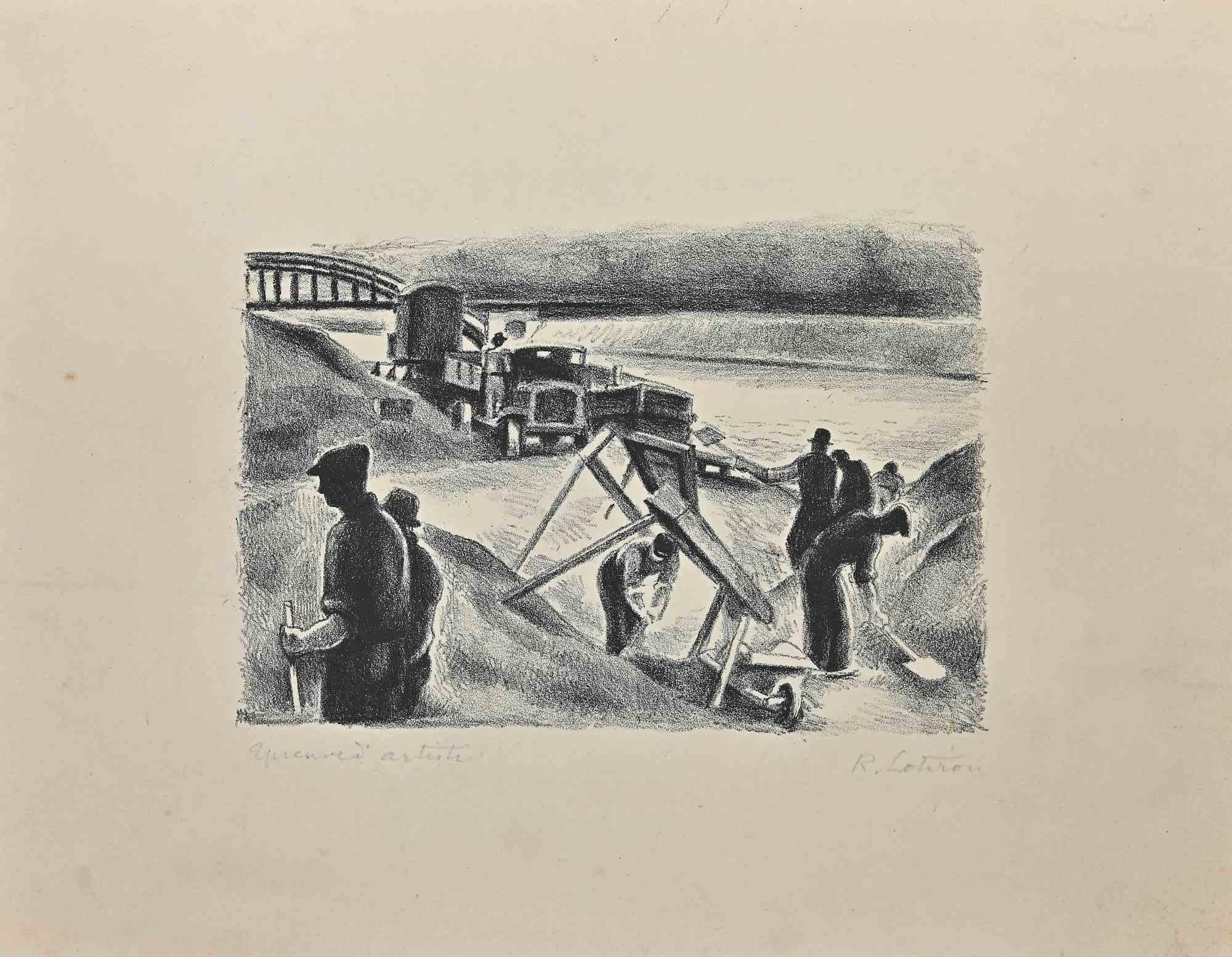Marc Chagall20th century color lithograph man and woman figures red and black1960
1960
About the Item
- Creator:Marc Chagall (1887 - 1985, French)
- Creation Year:1960
- Dimensions:Height: 25.5 in (64.77 cm)Width: 21.5 in (54.61 cm)
- Medium:
- Period:
- Condition:
- Gallery Location:Milwaukee, WI
- Reference Number:
Marc Chagall
Described by art critic Robert Hughes as "the quintessential Jewish artist of the twentieth century," the Russian-French modernist Marc Chagall worked in nearly every artistic medium. Influenced by Symbolism, Fauvism, Cubism and Surrealism, he developed his own distinctive style, combining avant-garde techniques and motifs with elements drawn from Eastern European Jewish folk art.
Born Moishe Segal in 1887, in Belarus (then part of the Russian empire), Chagall is often celebrated for his figurative paintings, but he also produced stained-glass windows for the cathedrals of Reims and Metz, in France; for the United Nations, in New York; and for the Hadassah Hospital in Jerusalem, as well as book illustrations, stage sets, ceramics, tapestries and fine-art prints. Characterized by a bold color palette and whimsical imagery, his works are often narrative, depicting small-village scenes and quotidian moments of peasant life, as in his late painting The Flight into Egypt from 1980.
Before World War I, Chagall traveled between St. Petersburg, Paris and Berlin. When the conflict broke out, he returned to Soviet-occupied Belarus, where he founded the Vitebsk Arts College before leaving again for Paris in 1922. He fled to the United States during World War II but in 1947 returned to France, where he spent the rest of his life. His peripatetic career left its mark on his style, which was distinctly international, incorporating elements from each of the cultures he experienced.
Marc Chagall remains one of the past century’s most respected talents — find his art on 1stDibs.
- ShippingRetrieving quote...Ships From: Milwaukee, WI
- Return PolicyA return for this item may be initiated within 14 days of delivery.
- Toulouse Lautrec Original Lithograph Famous Political 1800s Collection SignedBy Henri de Toulouse-LautrecLocated in Milwaukee, WI"Lautrec Book: From Au Pied du Sinai written by Georges Clemenceau" lithographs created by the legendary Henri de Toulouse-Lautrec. This book, Au Pied...Category
1890s Post-Impressionist Figurative Prints
MaterialsLithograph, Mulberry Paper
- "Daphnis et Chloe (Two Bulls & Person in Water), " Lithograph signed by BonnardBy Pierre BonnardLocated in Milwaukee, WI"Daphnis et Chloe (Two Bulls & Person in Water)" is an original lithograph by Pierre Bonnard, signed in lower left. It is a black and white work ...Category
Early 1900s Post-Impressionist Figurative Prints
MaterialsLithograph
- Nude Female Figure Baby Family 1910's Black and White Original Lithograph SignedBy Max PechsteinLocated in Milwaukee, WI"Three Seated Figures- Women (Frauen)" is an original lithograph from the "South Sea (Sudsee)" series by Max Pechstein. This lithograph depicts th...Category
Early 20th Century Expressionist Figurative Prints
MaterialsLithograph
- "Cheveaux Et Cavalier (Horse & Rider) VI, " Lithograph signed by Marino MariniBy Marino MariniLocated in Milwaukee, WI"Cheveaux Et Cavalier (Horse & Rider) VI (Black, Red, Blue, White)" is an original color lithograph signed in pencil by the artist Marino Marini in the lower right. Reference: Guasta...Category
1970s Post-Modern Animal Prints
MaterialsLithograph
- "Artiesten Winterfest, " an Original Color Lithograph by Jan SluijtersBy Jan SluijtersLocated in Milwaukee, WI"Artiesten Winterfest" is an original color lithograph poster by Jan Sluijters. It depicts a brightly colored woman with long orange hair and sunglasses ...Category
Early 20th Century Expressionist Figurative Prints
MaterialsLithograph
- "Font-Romeu, " Original Color Lithograph Poster by Vincent GuerraBy Vincent GuerraLocated in Milwaukee, WI"Font-Romeu (Tennis/Golfing Retreat)" is an original color lithograph poster by the designer Vincent Guerra. He signed the design in the lower left. This poster depicts a woman relaxing under a tree...Category
1920s Landscape Prints
MaterialsLithograph
- Lotus Pool - Contemporary, 21st Century, Lithograph, Limited Edition, ChineseBy Yue MinjunLocated in Zug, CHYue Minjun, Lotus Pool Lithograph in color on wove paper “BFK Rives” Edition of 130 120 x 80 cm (47.2 x 31.4 in) Stamped Signature, numbered in Roman numerals In mint condition, as a...Category
Early 2000s Contemporary Figurative Prints
MaterialsLithograph
- Sheep Herd - Contemporary, 21st Century, Lithograph, Limited Edition, ChineseBy Yue MinjunLocated in Zug, CHYue Minjun, Sheep Herd Lithograph Edition of 130 120 x 80 cm (47.2 x 31.5 in) Stamped Signature, numbered in Roman numerals In mint condition, as acquired...Category
Early 2000s Contemporary Figurative Prints
MaterialsLithograph
- Maurice de Vlaminck - House in Rueil - Original LithographBy Maurice de VlaminckLocated in Collonge Bellerive, Geneve, CHMaurice de Vlaminck Original Lithograph Signed in the plate 1958 Title: House in Beauce Dimensions: 22 x 27 cm Reference: Catalogue raisonné Walterskirchen 275 Condition : Excellent Maurice de Vlaminck (1876 - 1958) Maurice was three years old when his family moved from Paris to Vésinet. He first pursued the same musical career as his parents, who were both musicians, leaving his home as a trained double-bass player in 1892 to move to Chatou near Versailles. After absolving his military service in Vitré Maurice Vlaminck worked as a musician until he accidentally met André Derain in 1900. It was Derain who kindled Vlaminck's artistic ambitions. He decided to become a painter and rented an old hut in which he and Derain shared a studio. A crucial turning point in Vlaminck's artistic development was a visit to a van Gogh exhibition...Category
1950s Impressionist Landscape Prints
MaterialsLithograph
- "Lorenzaccio" by Alphonse Mucha from Les Maitres de l'AfficheBy Alphonse MuchaLocated in Hinsdale, ILAlphonse Mucha "Lorenzaccio, a play in five acts and an epilogue by Alfred de Museet" Plate #114 Image Size: 15" x 11" 1896 Alphonse Mucha was born in Southern Moravia on July 24, 1860. At the age of seventeen the artist left his home, to work as a painter of stage decorations...Category
1890s Art Nouveau Figurative Prints
MaterialsLithograph
- Chasseurs D'Afrique, Armee de Ligne lithograph pub. Lemercier 1861By Édouard Armand-DumaresqLocated in Paonia, COChasseurs D’Afrique shows two bearded French soldiers from the Armee De Ligne or the Line Army series. There is an officer in the foreground with his arms across his chest and a...Category
1860s Figurative Prints
MaterialsLithograph
- Les Travaux - Lithograph by Robert Lotiron - Early 20th CenturyBy Robert LotironLocated in Roma, ITLes Travaux is a lithograph realized by Robert Lotiron in the Early 20th Century. Good condition. The artwork is depiced through soft strokes in a well-balanced composition.Category
Mid-20th Century Modern Figurative Prints
MaterialsLithograph



